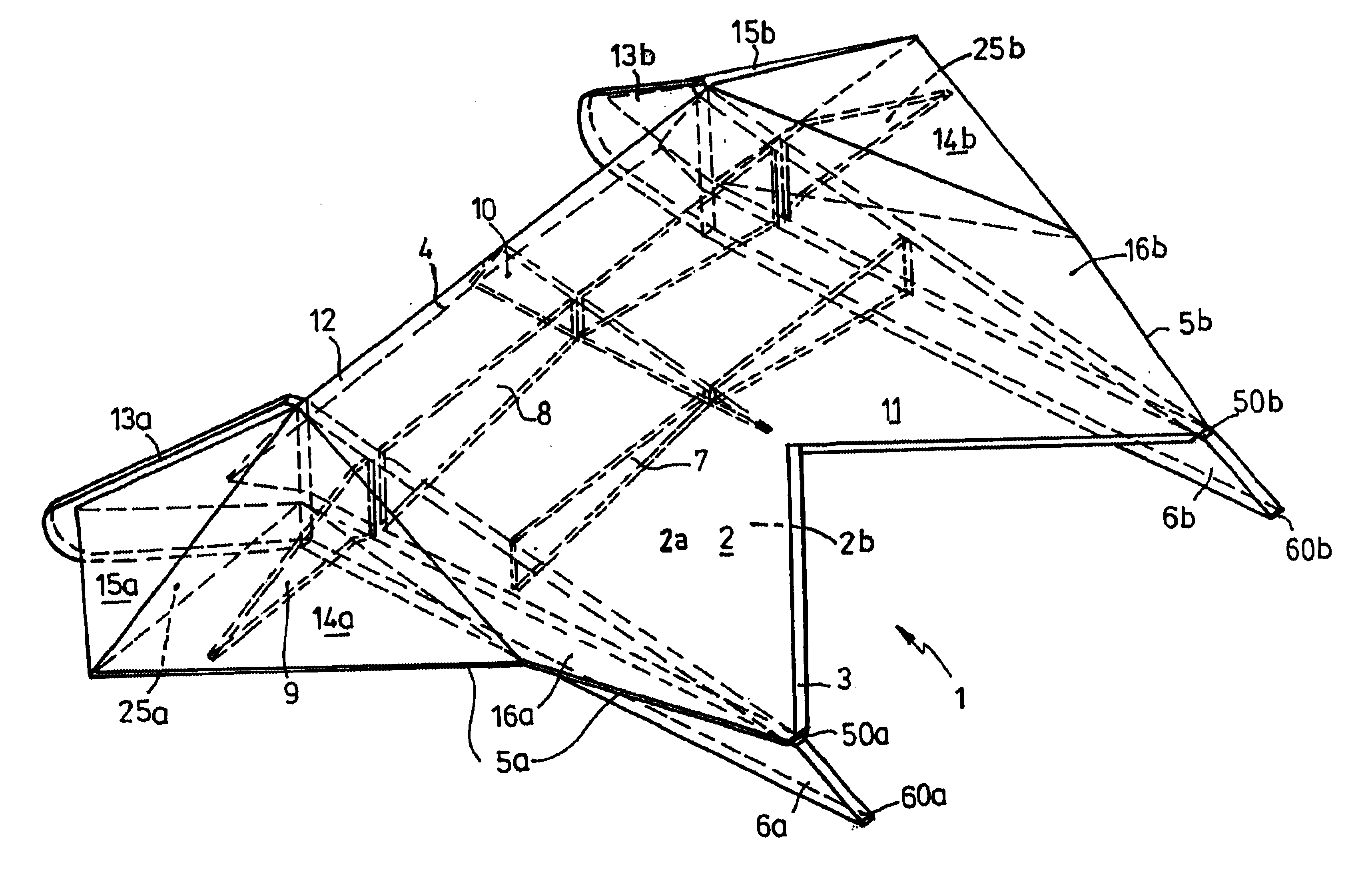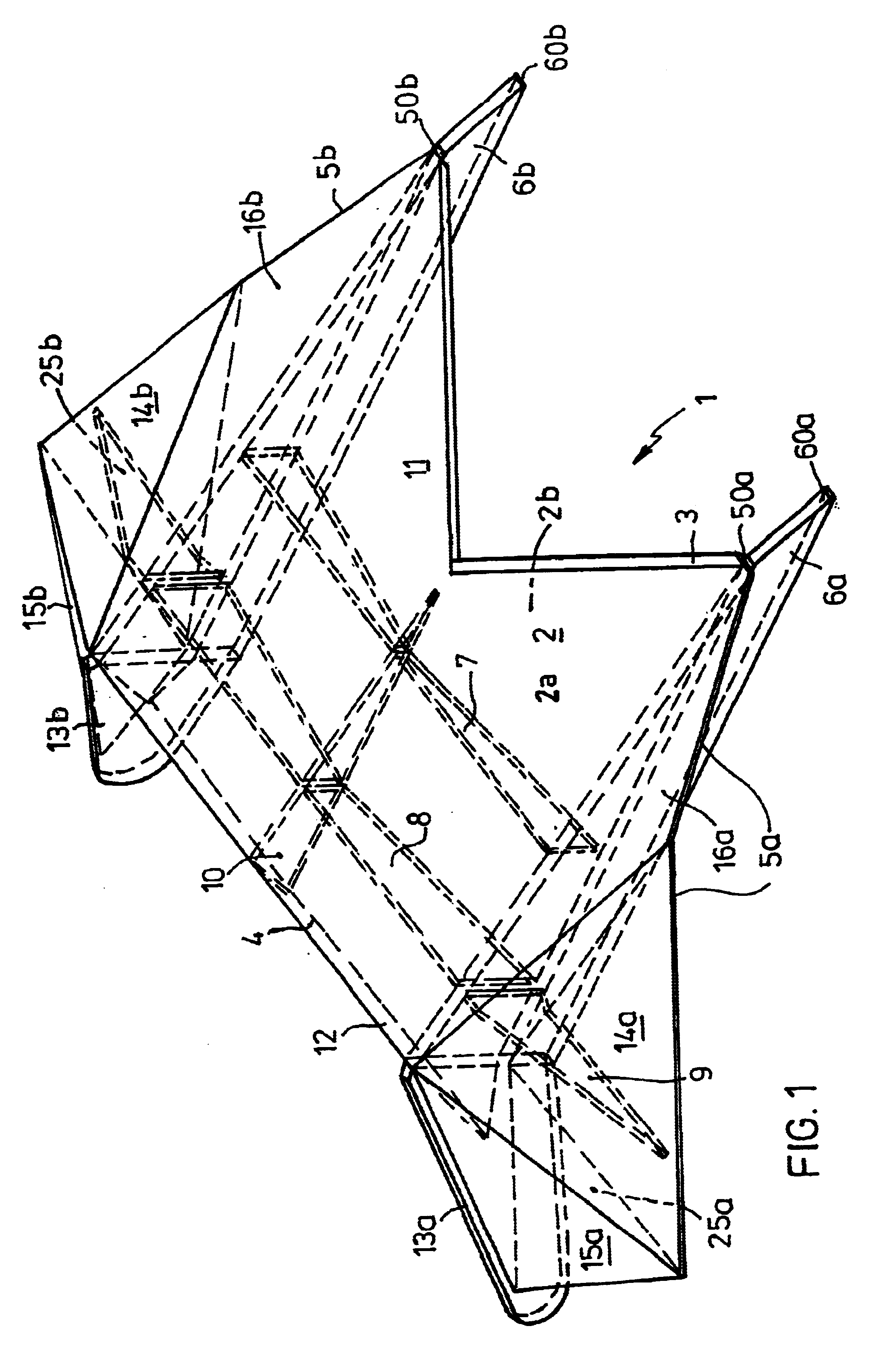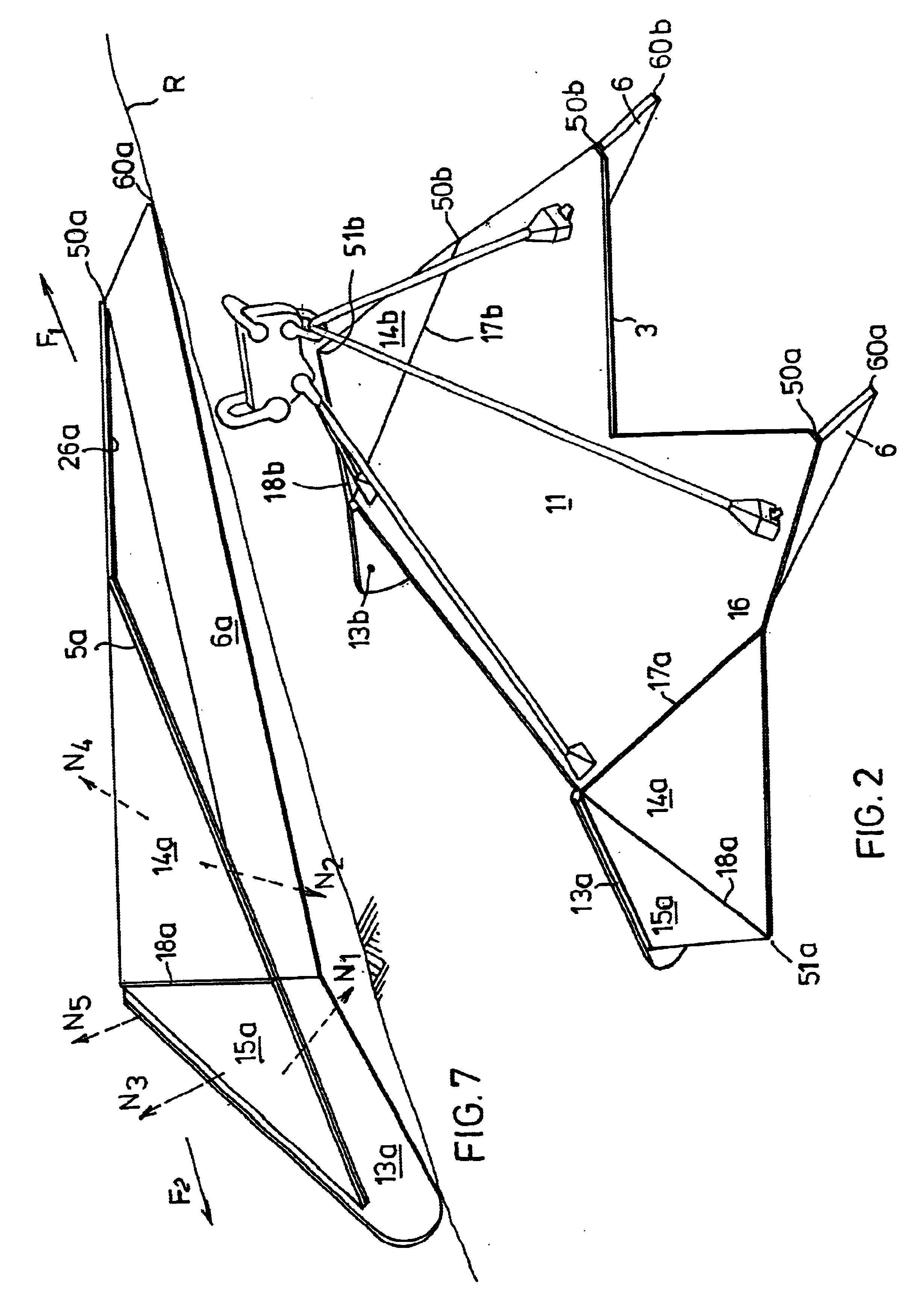Anchor fluke
a technology of anchor fluke and spherical spherical spherical, which is applied in the direction of anchors, waterborne vessels, vessel parts, etc., can solve the problems of increasing the production cost of anchors in question, and affecting the stability of anchorag
- Summary
- Abstract
- Description
- Claims
- Application Information
AI Technical Summary
Benefits of technology
Problems solved by technology
Method used
Image
Examples
Embodiment Construction
The anchor fluke of FIG. 1 is a so-called hollow fluke that is bounded at the upper side and lower side by upper plate assembly 2a and lower plate assembly 2b, respectively. Cross girders 7 and 8 and longitudinal girders 6a and 6b and 10 are located between these two plate assemblies 2a and 2b . Here, the longitudinal girders 6a and 6b project from the lower side, but that is not absolutely necessary, and likewise, at the front side with penetration points 60a and 60b and at the rear side by means of trailing plates 13a and 13b, which are turned at an angle, diverge with respect to one another and project from the lower side of the fluke.
In order to provide strength at the areas of the anchor fluke 1 lying outside the longitudinal girders 6a and 6b, the cross girder 8 is prolongated in substantially triangular end cross girders 9a, 9b, which extend obliquely downwards to the side.
At its front side or penetration side, the anchor fluke 1 is bounded by a V-shaped front edge 3, which e...
PUM
 Login to View More
Login to View More Abstract
Description
Claims
Application Information
 Login to View More
Login to View More - R&D
- Intellectual Property
- Life Sciences
- Materials
- Tech Scout
- Unparalleled Data Quality
- Higher Quality Content
- 60% Fewer Hallucinations
Browse by: Latest US Patents, China's latest patents, Technical Efficacy Thesaurus, Application Domain, Technology Topic, Popular Technical Reports.
© 2025 PatSnap. All rights reserved.Legal|Privacy policy|Modern Slavery Act Transparency Statement|Sitemap|About US| Contact US: help@patsnap.com



